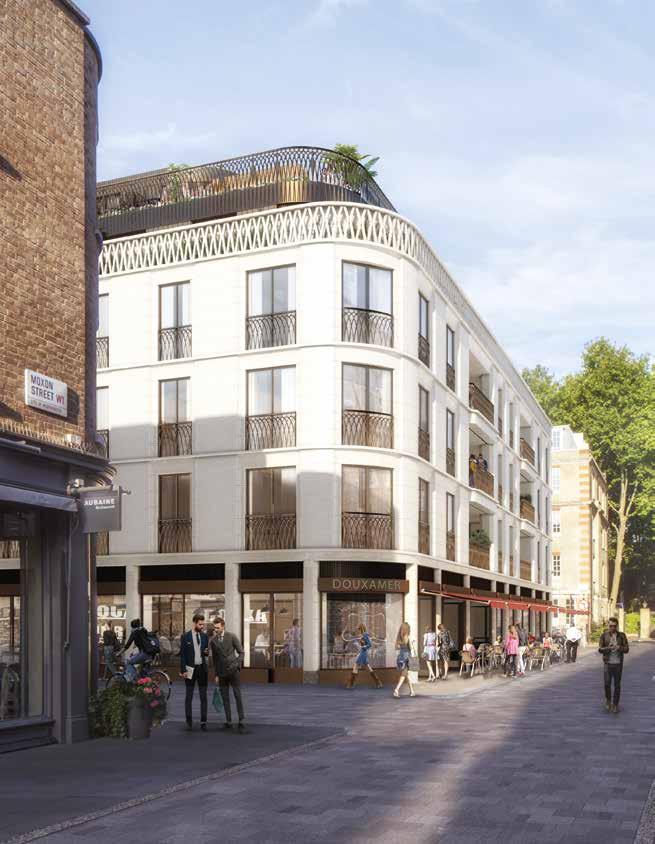
4 minute read
A Rare Find in Marylebone
What is it about Marylebone? Perhaps it’s the elegance of its architecture and the charm of its boutiques and eateries – or the surprising tranquillity of its tree-lined streets, a world away from the bustle of nearby Oxford Street. In the end, it might be the sense of community and leisurely pace of life that set this neighbourhood apart. As the city buzzes with its busy schedules, Marylebone takes its time – savouring sit-down coffees in local cafés and loungy lunches in the park.
It’s easy to forget you’re just a short stroll away from transport hubs, tourist attractions and all the trappings of big city life. As you find yourself idling around the shops on chic Chiltern Street, exchanging hellos with the butcher at the Ginger Pig or sunbathing in a quiet corner of Paddington Street Gardens, you quickly realise that this is a place where people actually live –not just commute to, pass through, or visit for a few hours a day.
Advertisement
Essential services like schools and surgeries comfortably sit alongside fine dining restaurants and stylish boutiques. It’s a neighbourhood where you can buy a loaf of sourdough bread and a designer handbag on the same trip.
At the heart of this scene lies Marylebone Square, a collection of 54 high-end apartments, carefully chosen boutiques and restaurants, and a versatile community hall. A modern take on a traditional London mansion block, this is refined London living at its very best. Marylebone Square offers classic yet contemporary design, and an authentic village feel – right in the city centre.
For a piece of once noble land in Central London to remain unclaimed is unheard of. Yet, for the past five decades this prime spot at the heart of Marylebone has been left untouched. Surrounded by lively streets loaded with tales of past generations, this preserved patch of land – taking up the space of an entire city block – has its own story to tell.
It all began in 1966 when London County Council took ownership of the land that, at the time, was home to a block of terraced Victorian houses. Before this, it belonged to The Howard de Walden Estate that to this day are still freehold owners of most Marylebone buildings. After a compulsory purchase order to build a primary school for the community was issued, the terraced Victorian houses were knocked down. However, much to the dismay of the neighbourhood and the estate, the school was never built.
Caught up in years of debate and deliberation – and passed from one bureaucratic organisation to the other – the land remained empty. A natural gathering place at the heart of the community, it became the home of the local farmers’ market – and was otherwise used as a commercial car park. In 1991, it was passed on to Westminster City Council on the condition that the land could not be sold before 31 August 2011 without explicit permission from the Secretary of State for Education.
Half a mile south-west of Marylebone Square, you’ll find The Grazing Goat pub, whose name forms an unlikely clue to the story of the district. This area was once hundreds of acres of farmland making up the Portman Estate, first acquired by Sir William Portman, Lord Chief Justice to Henry VIII, in 1532. To this day, much of Central London’s most sought-after real estate is owned by five aristocratic families whose claims date back to a time when the land stretching beyond the narrow, twisting streets of Tudor London was meadow and pasture. Today, the story of Marylebone is still being told. In Marylebone Square, there is a new chapter being added to the story of London. This tract of the most treasured turf in the city has until now remained unclaimed. The site lies between the Portman Estate to the west and the Howard de Walden Estate to the east. Marylebone Square captures the grandeur of its surroundings, while maintaining the sensitive approach to stewardship characteristic of the area’s famous landlords.








